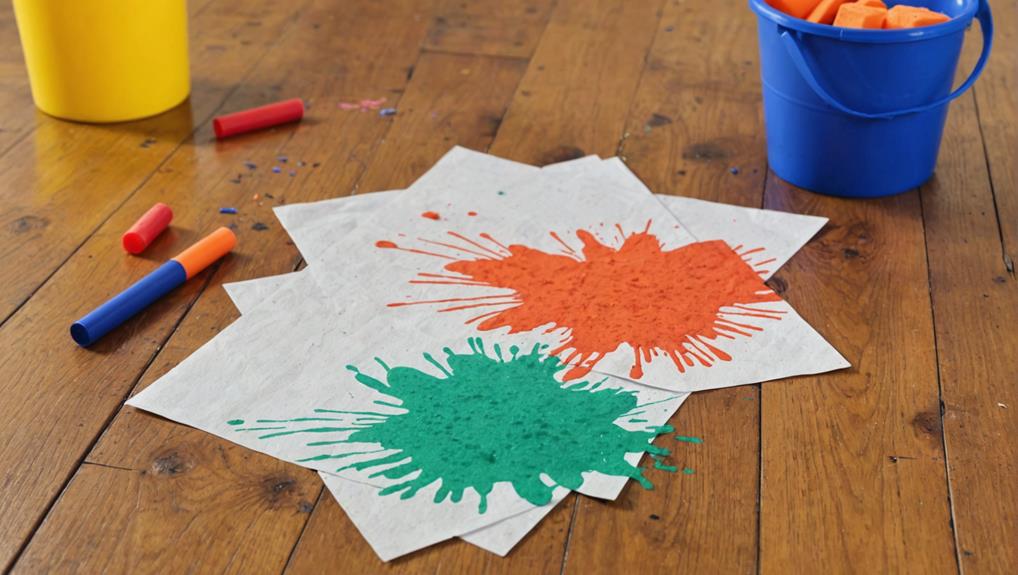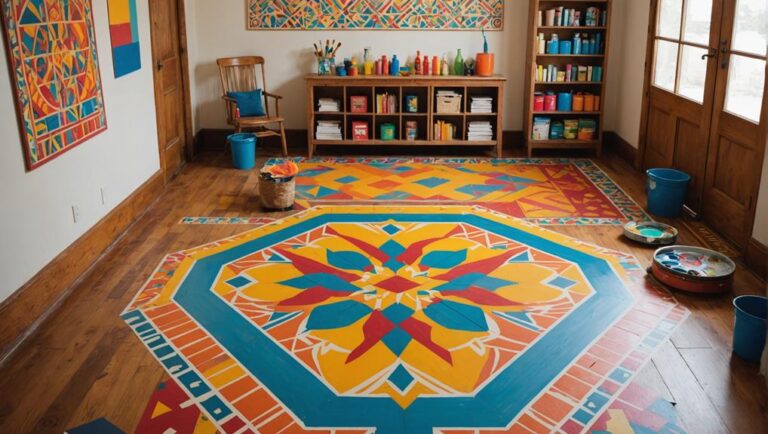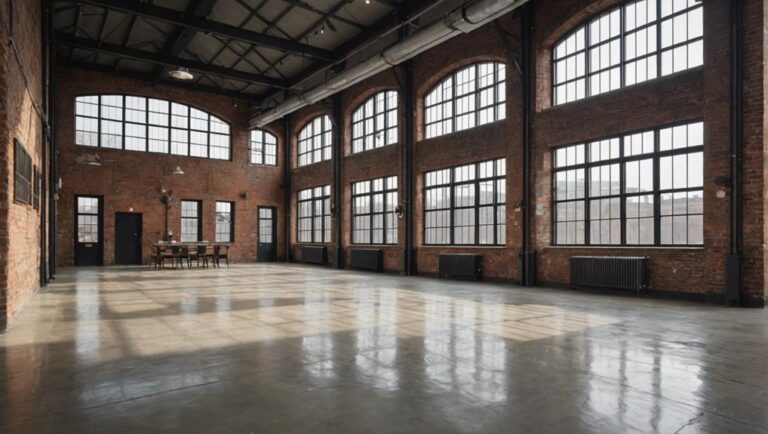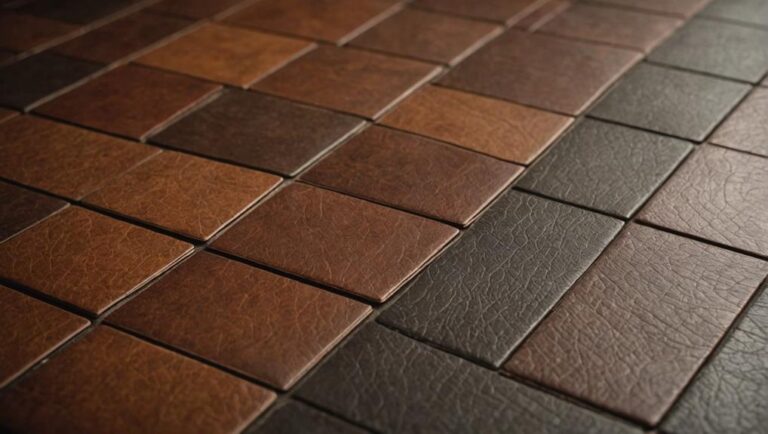To clean crayon and marker stains from floors, start by evaluating the damage and identifying the type of stain. Gather supplies like mild dish soap, a soft cloth, and rubbing alcohol for tougher spots. For fresh stains, dampen a cloth with soapy water and blot from the outside in. Lightly scrub with a soft brush if needed. For dried stains, apply rubbing alcohol or make a baking soda paste for tile. After cleaning, wipe the area with a damp cloth and dry thoroughly. Interested in tips for preventing future stains? There's plenty more you can do!
Assessing the Damage
Before you tackle cleaning crayon and marker from your floors, it's important to assess the damage thoroughly. Start by looking closely at the affected areas. Is the stain fresh or dried? Fresh stains can be easier to remove, while dried stains might require more effort and specific techniques. This damage assessment will help you determine the best course of action.
Next, focus on stain identification. Different types of crayons and markers have various properties, and knowing what you're dealing with can make a big difference. For instance, wax-based crayons might need different cleaning agents compared to water-based markers. Take note of the colors, as some might have pigments that can stain more aggressively.
Keep in mind that certain floor types, like hardwood, laminate, or tile, may react differently to cleaning methods. Check for any finishes or coatings that could be damaged by harsh cleaners. If you're unsure, it's wise to test any cleaning solution on a small, inconspicuous area first.
Lastly, consider if any furniture or items nearby were affected. You wouldn't want to miss a hidden stain, so inspect those areas too. A thorough damage assessment and proper stain identification are vital steps before you gather your cleaning supplies. By taking the time to evaluate the situation first, you'll set yourself up for a more effective cleaning process and guarantee the safety of your floors.
Gathering Your Supplies
After evaluating the damage and identifying the types of stains you're dealing with, it's time to gather your supplies for cleaning. Having the right cleaning tools on hand will make stain removal easier and more effective. Here's a quick list to help you prepare:
| Cleaning Tools | Purpose |
|---|---|
| Mild dish soap | Breaks down crayon and marker stains |
| Soft cloth or sponge | Gentle scrubbing without scratching |
| Rubbing alcohol or vinegar | Dissolves tougher stains |
Before you start, verify you've got everything ready. If you're dealing with crayon marks, a combination of mild dish soap and warm water is often effective. For stubborn marker stains, rubbing alcohol or vinegar can work wonders.
Remember to wear gloves if you're sensitive to cleaning agents, and always test any solution on a small, inconspicuous area of your floor first. This will help you avoid any unexpected damage.
If your cleaning tools include a scraper, use it cautiously to lift off any excess crayon or marker without scratching the floor.
Gathering these supplies will set you up for success in your cleaning efforts. By being prepared, you'll save time and verify a safer environment for you and your floors. Now that you're equipped with the right tools, you're ready to tackle those pesky stains!
Step-by-Step Cleaning Methods
Cleaning crayon and marker stains from your floors doesn't have to be a challenging task. With the right cleaning techniques, you can tackle those stubborn marks effectively and safely. Here's a step-by-step guide to help you through the stain removal process.
First, gather your supplies: a soft cloth, warm water, dish soap, and a gentle scrub brush. If the stain persists, consider using rubbing alcohol or a commercial stain remover labeled as safe for your floor type. Always test any cleaner on a small, inconspicuous area to verify it won't damage your flooring.
Start by dampening your cloth with warm, soapy water. Gently blot the stained area, working from the outside in to avoid spreading the stain. Allow the solution to sit for a few minutes to break down the crayon or marker.
Next, use your scrub brush to lightly scrub the area. For tougher stains, apply rubbing alcohol using a cotton ball or cloth, then blot again. Always follow up with a damp cloth to remove any residue.
Once the stain is gone, dry the area thoroughly with a clean towel. If you used a commercial cleaner, follow the manufacturer's instructions for drying times.
For larger areas, you might need to repeat these cleaning techniques to achieve the best results. Remember, patience is key when it comes to effective stain removal. By following these steps, your floors will look as good as new!
Preventing Future Stains
Once you've successfully removed crayon and marker stains from your floors, it's time to contemplate how to keep them looking pristine in the future. Preventing future stains is about being proactive and making smart choices regarding your flooring and maintenance.
First, consider applying stain-resistant treatments to your floors. Many manufacturers offer products specifically designed to repel stains and make cleanup easier. These treatments can help prevent crayon and marker marks from soaking into the flooring, giving you more time to address spills before they become an issue.
Additionally, protective coatings are a great option for safeguarding your floors. Whether you have hardwood, laminate, or tile, a suitable protective coating can create a barrier against stains and scratches. Make sure to choose a coating that's safe for your specific flooring type, as well as for your family's health.
Creating designated art zones for your kids can also minimize the risk of stains. Use washable markers and crayons, and encourage crafting in areas that are easy to clean, such as a kitchen floor or a designated playroom.
Lastly, regularly inspect and clean your floors. A quick wipe-down can help you catch potential stains before they set in. By combining stain-resistant treatments, protective coatings, and good habits, you can considerably reduce the chances of crayon and marker stains ruining your beautiful floors.
Tips for Different Flooring Types
How can you effectively tackle crayon and marker stains on different types of flooring? Each flooring type requires a unique approach to guarantee safety and effective cleaning.
For hardwood care, start by gently scraping off excess crayon or marker with a plastic scraper. Then, use a damp cloth with a wood-safe cleaner. Avoid soaking the wood, as excess moisture can cause damage.
When dealing with tile, consider using a baking soda paste. Mix baking soda with water, apply it to the stain, and let it sit for a few minutes before scrubbing gently with a soft brush. Rinse thoroughly to avoid any residue.
For carpet techniques, blot the area with a cloth dampened in warm soapy water. Avoid rubbing, as this can spread the stain. If it persists, try using a carpet cleaner designed for your carpet type.
In laminate options, use a mixture of vinegar and water. Apply it sparingly and wipe with a soft cloth. Be cautious not to let excess liquid seep into the seams.
For vinyl advice, you can dampen a cloth with rubbing alcohol to remove stains. Gently rub the area, then wipe clean with a water-dampened cloth.
Lastly, concrete methods involve using a mixture of dish soap and water. Scrub the area with a stiff brush, then rinse thoroughly. Always test any cleaning solution on a small, inconspicuous area first to confirm it won't cause damage.
Frequently Asked Questions
Can I Use Vinegar to Remove Crayon Stains From Floors?
Imagine trying to wipe away a rainbow with a damp cloth—frustrating, right? When it comes to crayon stains, vinegar can actually be a hero in your cleaning arsenal. For effective crayon removal tips, mix equal parts vinegar and water, then gently scrub the stain with a cloth. Vinegar's acidity helps break down the wax, making the task much easier. Just be sure to test it on a small area first for safety!
Are There Any Natural Cleaning Solutions for Marker Stains?
For marker removal, you can use several natural remedies that are both effective and safe. Try mixing equal parts of baking soda and water to create a paste, then gently scrub the stained area. Another option is to use rubbing alcohol on a cloth to blot the stain. You could also try a mixture of vinegar and water for a less intense approach. Always test any solution on a small, hidden area first to guarantee it won't damage your floors.
Will Rubbing Alcohol Damage My Floor Finish?
When considering if rubbing alcohol will damage your floor finish, it's crucial to know the type of finish you have. While it can be effective for cleaning, some floor finishes are sensitive to harsh chemicals. To guarantee safety, try testing a small, inconspicuous area first. If you're unsure, explore gentler cleaning methods that are less likely to harm your floors. Always prioritize safety by using products specifically designed for your floor type.
How Can I Remove Crayon From Carpet?
When it comes to crayon removal, you've got to roll with the punches. Start by scraping off any excess crayon gently with a dull knife. Then, apply a carpet cleaning solution or a mix of white vinegar and water to the stained area. Blot the stain with a clean cloth, working from the outside in. Rinse with cold water and let it dry. You'll have your carpet looking good as new in no time!
What Should I Do if Stains Persist After Cleaning?
If stains persist after cleaning, don't worry—there are additional stain removal techniques you can try. First, reapply your chosen cleaning solution and let it sit a bit longer to break down the stain. You might also consider using a soft brush for better agitation. If that doesn't work, a mix of baking soda and water can be a safe, effective alternative. Always test any solution on a small area first to guarantee safety for your surfaces.




